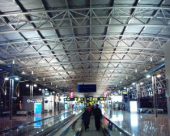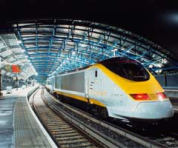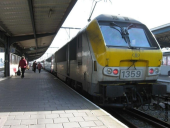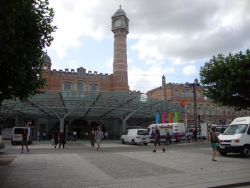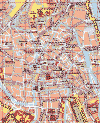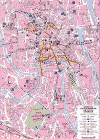|
|
|
Because of the attacks at Brussels Airport, airplanes will land at different airports in Belgium till at least the end of this week see: Brussels Airlines and Ryanair The other airports taking over the international flights are - Liege (1.30 hours from Ghent by train), Antwerp (45 mins from Ghent by Train) and Ostend (35 mins from Ghent by train). Other info on brusselsairport2203
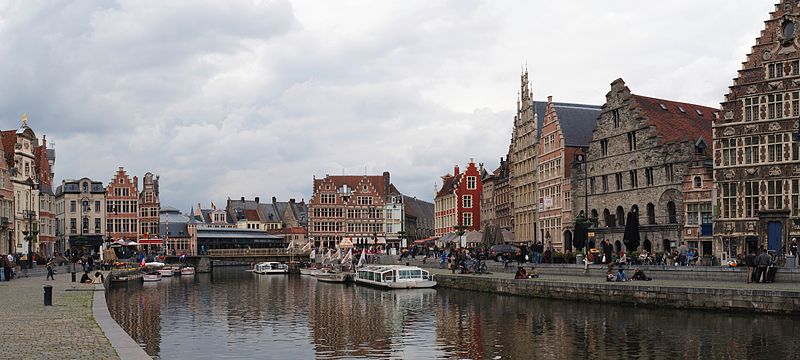
Conference Location
|
|
History |
Archaeological evidence shows human presence in the region of the confluence of Scheldt and Lys going back as far as the Stone Age and the Iron Age. Most historians believe that the older name for Ghent, 'Ganda', is derived from the Celtic word 'ganda' which means confluence. There are no written records of the Roman period but archaeological research confirms that the region of Ghent was further inhabited. When the Franks invaded the Roman territories (from the end of the 4th century and well into the 5th century) they brought their language with them and Celtic and Latin were replaced by Old Dutch. |
|
Around 650, Saint Amand founded two abbeys in Ghent: the Saint Peter Abbey (nl) (Blandinium) and the Saint Bavo Abbey (nl). The city grew from several nuclei, the abbeys and a commercial centre. Around 800, Louis the Pious, son of Charlemagne, appointed Einhard, the biographer of Charlemagne, as abbot of both abbeys. In 851 and 879, the city was however attacked and plundered twice by the Vikings. |
|
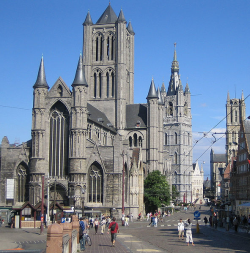 |
The city recovered and flourished from the 11th century on. Until the 13th century, Ghent was the biggest city in Europe after Paris; it was bigger than London, Cologne, or Moscow. Within the city walls lived up to 65,000 people. Today, the belfry and the towers of the Saint Bavo Cathedral and Saint Nicholas' Church are just a few examples of the skyline of the period. The rivers flowed in an area where a lot of land was periodically inundated. These richly grassed 'meersen' ("water-meadows": a word related to the English 'marsh', but not meaning exactly the same: a 'meers' is not permanently under water) were ideally suited for herding sheep, the wool of which was used for making cloth. In fact, Ghent was, during the Middle Ages, the most important city for cloth. |
|
The wool industry, originally established at Bruges, created the first European industrialized zone in Ghent in the High Middle Ages. The mercantile zone was so highly developed that wool had to be imported from Scotland and England. This was one of the reasons for Flanders' good relationship with Scotland and England. Ghent was the birthplace of John of Gaunt, Duke of Lancaster. The trade with England (but not Scotland) suffered significantly during the Hundred Years' War. |
|
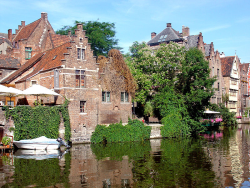 |
The city recovered in the 14th century, while Flanders was united with neighbouring provinces under the Dukes of Burgundy. High taxes led to a rebellion and eventually the Battle of Gavere in 1453, in which Ghent suffered a terrible defeat at the hands of Philip the Good. Around this time the center of political and social importance in the Low Countries started to shift from Flanders (Bruges–Ghent) to Brabant (Antwerp–Brussels), although Ghent would continue to play an important role. |
|
In 1500, Juana of Castile gave birth to Charles V, who became Holy Roman Emperor and King of Spain. Although native to Ghent, he punished the city after the 1539 Revolt of Ghent and obliged the city's nobles to walk in front of the emperor barefoot with a noose (Dutch: strop) around the neck; since this incident, the people of Ghent have been called "Stroppendragers" (noose bearers). The Saint Bavo Abbey (nl) was abolished, torn down, and replaced with a fortress for Spanish troops. Only a small portion of the abbey was spared demolition. |
|
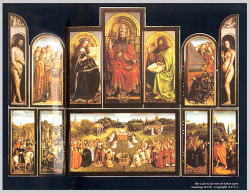 |
The late 16th and the 17th century brought devastation because of the Eighty Years' War. The war ended the role of Ghent as a center of international importance. In 1745, the city was captured by French forces during the War of the Austrian Succession before being returned to Austria following the Treaty of Aix-la-Chapelle. |
|
In the 18th and 19th century the textile industry flourished again in Ghent. In 1800 Lieven Bauwens, having smuggled the plans out of England, introduced the first mechanical weaving machine on the European continent. |
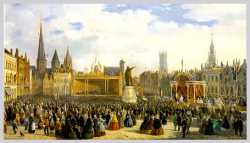
|
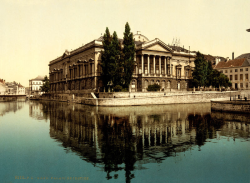
|
Ghent was also the site of the signing of the Treaty of Ghent which formally ended the War of 1812 between Britain and the United States. After the Battle of Waterloo, Ghent became a part of the United Kingdom of the Netherlands for 15 years. In this period, Ghent established its own university (1817) and a new connection to the sea (1824–27). |
|
After the Belgian Revolution, with the loss of port access to the sea for more than a decade, the local economy collapsed and the first Belgian trade-union originated in Ghent. In 1913 there was a World exhibition in Ghent. As a preparation for these festivities, the Sint-Pieters railway station was completed in 1912. Ghent was occupied by the Germans in both World Wars but escaped severe destruction and was liberated by the British 7th Desert Rats Armoured Division on September 6, 1944. |
|
The city combines an impressive past with a vivid present. Numerous tourists visit Ghent of which the citizens carry the nickname "stroppendragers" or noose-bearers and use the extensive accommodation possibilities. The historic heart of the city offers a lot of places of interest. From St Michael's bridge there is a wonderful view on the skyline of Ghent with the three impressive towers of St Nicholas' Church, the Belfry with its bell tower and St Bavo's cathedral with the world famous painting "The Adoration of the Mystic Lamb" by Jan van Eyck. Traces of the Middle Ages were preserved at a lot of places. The old port with its guild halls on the Graslei and Korenlei is merely one example of the beautiful views this town has to offer. Not far from the Graslei arises the Castle of the Counts, once the medieval fortress of the Count of Flanders. Nowadays it is a major tourist attraction. Ghent also has several museums, abbeys, beguinages, dozens of churches and historical buildings. Not only art lovers but everyone can find something here to suit his taste. Ghent offers a lot of shops, restaurants and an exciting nightlife. Ghent can be discovered by boat, carriage, bicycle or on foot.
Parts of this text were copied from 
|
|
Conference Venue
KU Leuven Technologiecampus Gent |
Getting to Ghent and the University
By Plane |
Ghent lies some 40 km to the west of the airport of Brussels and some 70 kms from Charleroi-(Brussels South Airport) if you fly Ryanair. See below how to get reach Ghent from these different airports.
|
By Train |
|
By Tram |
Ghent has an excellent network of trams and busses run by the De Lijn company which cover everywhere you could wish to go. You can buy tickets from De Lijn offices, some newsagents, ticket machines at the bus/tram stops, by SMS or from the drivers. Tickets bought before boarding are substantially cheaper than those bought from the drivers and the present-time cost of a single ticket, bought in advance, is 1.20 Euro (2 Euro if bought on the vehicle). Single tickets must be validated in the machine on board and are then good for 60 minutes. There are also day tickets (dagpas) valid for 24, 72 or 120 hours costing respectively 5, 10 and 15 Euros. These also must validated at the start of the first journey. The machines are quite simple to use and those at the train station have several language options. Payment can be credit/debit card or cash and the machines give change for notes up to 10 Euro. |
By Coach and Bus |
You can reach Ghent from anywhere in Europe by EUROLINES. The EUROLINES coach stops at Ghent St.Pieters Station and at Ghent Dampoort. Within to use a bus Ghent see the information on De Lijn website. |
By Taxi |
Taxis can be taken just outside Gent St.Pieters and Gent Dampoort station or at different designated locations within Ghent. |
By Car |
Ghent is situated at the intersection of the motorways E17 and E40 and can easily be reached by car. National and international trains stop in Ghent (stations Sint-Pieters and Dampoort). |
On Foot
|
From the nearest bus/tram stop (Ghent Rabot) to the university faculty entrance is about 2 minutes on foot. |
Ghent Maps
Click on the above maps to enlarge

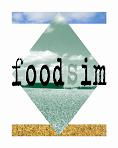
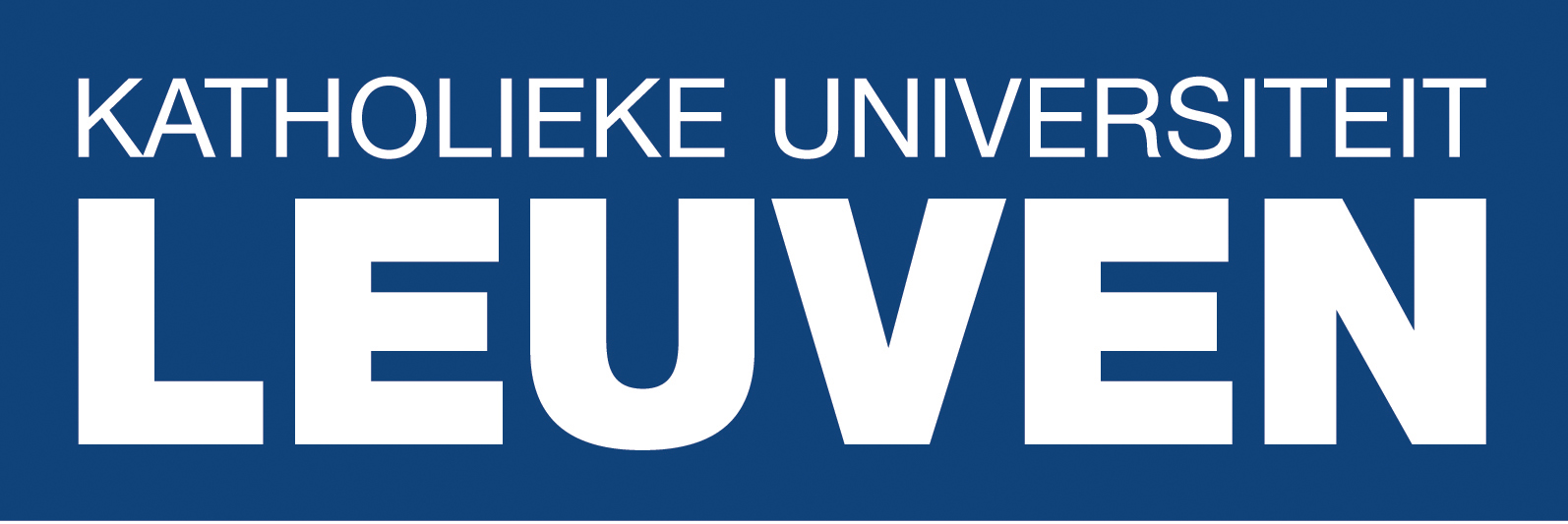
 Ghent is a city and a municipality located in the Flemish region of Belgium. It is the capital and largest city of the East Flanders province. The city started as a settlement at the confluence of the Rivers Scheldt and Lys and in the Middle Ages became one of the largest and richest cities of northern Europe. Today it is a busy city with a port and a university.
Ghent is a city and a municipality located in the Flemish region of Belgium. It is the capital and largest city of the East Flanders province. The city started as a settlement at the confluence of the Rivers Scheldt and Lys and in the Middle Ages became one of the largest and richest cities of northern Europe. Today it is a busy city with a port and a university.
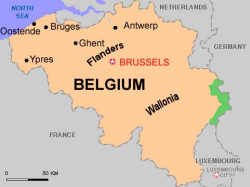

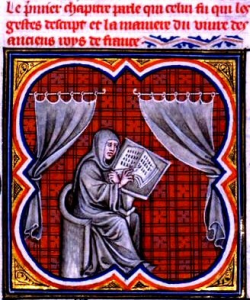
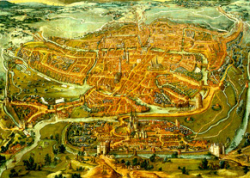
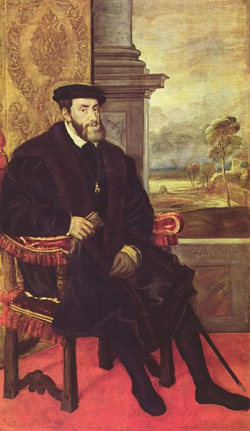
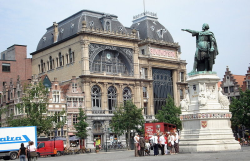
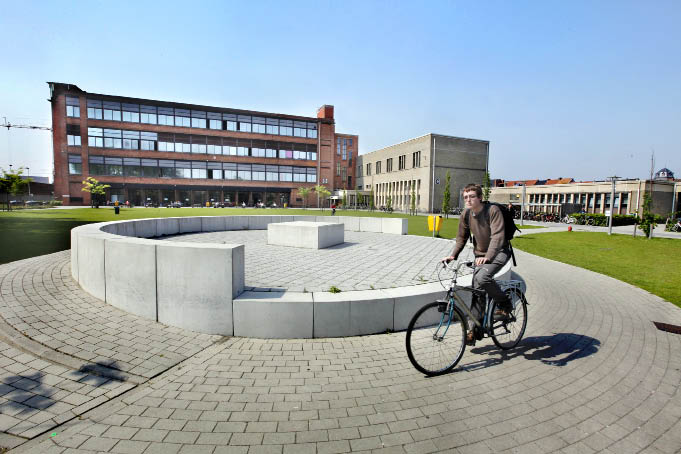
 Tel: +32.9 265 86 10
Tel: +32.9 265 86 10 Email:
Email: 
